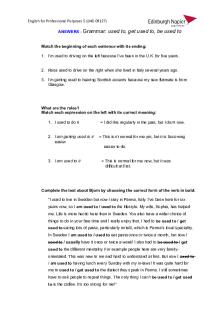Descriptive terms are used to name skeletal muscles PDF

| Title | Descriptive terms are used to name skeletal muscles |
|---|---|
| Course | Human Anatomy and Physiology with Lab I |
| Institution | The University of Texas at Dallas |
| Pages | 1 |
| File Size | 48.3 KB |
| File Type | |
| Total Downloads | 42 |
| Total Views | 123 |
Summary
Descriptive terms are used to name skeletal muscles...
Description
Descriptive terms are used to name skeletal muscles The human body has approximately 700 muscles. You do not need to learn every one of their names, but you will have to become familiar with many of them. Fortunately, the names anatomists assigned to the muscles include descriptive terms that can help you remember the names and identify the muscles. When you are faced with a new muscle name, it is helpful to first identify the descriptive portions of the name. The name of a muscle may include descriptive information about its region of the body; position, direction, and fascicle arrangement; structural characteristics; and action. Table 11–1 includes a useful summary of muscle terminology. Region of the Body Regional terms are most common as modifiers that help identify individual muscles. In a few cases, a muscle is such a prominent feature of a body region that a name referring to the region alone will identify it. Examples include the temporalis of the head and the brachialis (bra . -ke . -A-lis) of the arm. Position, Direction, or Fascicle Arrangement
Muscles visible at the body surface are often called externus or superficialis. Deeper muscles are termed internus or profundus. Superficial muscles that position or stabilize an organ are called extrinsic. Muscles located entirely within an organ are intrinsic. Muscle names may be directional indicators. For example, transversus and oblique indicate muscles that run across (transversus) or at a slanting (oblique) angle to the longitudinal axis of the body. A muscle name may refer to the orientation of the muscle fascicles within a particular skeletal muscle. Rectus means “straight,” and most rectus muscles have fascicles that run along the longitudinal axis of the muscle. Because we have several rectus muscles, the name typically includes a second term that refers to a precise region of the body. For example, the rectus abdominis of the abdomen is an axial muscle that has straight fascicles that run along its long axis. However, in the case of the rectus femoris, rectus refers to “straight muscle of the thigh” and not to its fascicles (which are bipennate)....
Similar Free PDFs

Alphabet Soup (Terms to know)
- 2 Pages

Skeletal Lab
- 20 Pages

Skeletal Muscle
- 9 Pages

Unit 7 intro to skeletal system
- 2 Pages

Descriptive Writing
- 2 Pages

Descriptive Statistics
- 3 Pages

Canine muscles
- 2 Pages
Popular Institutions
- Tinajero National High School - Annex
- Politeknik Caltex Riau
- Yokohama City University
- SGT University
- University of Al-Qadisiyah
- Divine Word College of Vigan
- Techniek College Rotterdam
- Universidade de Santiago
- Universiti Teknologi MARA Cawangan Johor Kampus Pasir Gudang
- Poltekkes Kemenkes Yogyakarta
- Baguio City National High School
- Colegio san marcos
- preparatoria uno
- Centro de Bachillerato Tecnológico Industrial y de Servicios No. 107
- Dalian Maritime University
- Quang Trung Secondary School
- Colegio Tecnológico en Informática
- Corporación Regional de Educación Superior
- Grupo CEDVA
- Dar Al Uloom University
- Centro de Estudios Preuniversitarios de la Universidad Nacional de Ingeniería
- 上智大学
- Aakash International School, Nuna Majara
- San Felipe Neri Catholic School
- Kang Chiao International School - New Taipei City
- Misamis Occidental National High School
- Institución Educativa Escuela Normal Juan Ladrilleros
- Kolehiyo ng Pantukan
- Batanes State College
- Instituto Continental
- Sekolah Menengah Kejuruan Kesehatan Kaltara (Tarakan)
- Colegio de La Inmaculada Concepcion - Cebu








